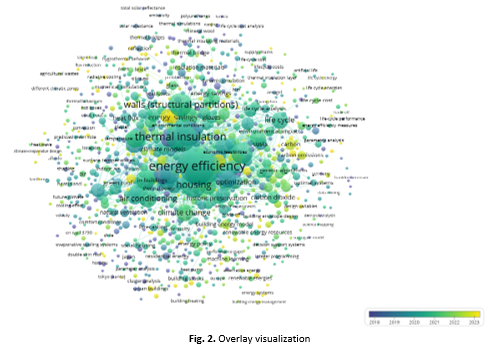A Comprehensive Bibliometric Review on Enhancing Residential Energy Efficiency: Focusing on Traditional Insulation Materials and Simulation-Driven Design Optimization
DOI:
https://doi.org/10.37934/sijdbes.2.1.5065Keywords:
Energy efficiency, residential buildings, insulation materials, simulation-based design, sustainable constructionAbstract
Efficiency in Energy efficiency in residential buildings is critical for sustainable development and combatting climate change. Heating and cooling the structures requires a significant amount of energy, demonstrating the need of current solutions in this area. The current study is a bibliometric evaluation of common kinds of insulation, as well as the use of simulation as a form of integration in energy efficiency improvement. Common materials such as wool, cork, and cellulose are evaluated for heat conductivity, cost, and environmental effect, whereas innovations are evaluated for efficiency at the expense of a negative environmental impact. Specific technical tools, such as Building Information Modeling (BIM) and EnergyPlus, are examined while evaluating the potential of a simulation tool to establish the suitability of materials and design techniques. The study recognises flaws in the method of incorporating traditional materials into simulation technologies, a lack of unified databases, and coordinated communication among specialists from many sectors. Some of the discoveries observed include research efforts becoming increasingly important in energy efficient design, innovative materials, and computational tools playing a critical part in energy-related ideas. Specific recommendations for practise include the use of regional adaptations of the insulation concept and the use of optimization through simulation from the first design phase to enable cost-effective solutions. In theoretical propositions, activities necessitate expanded frameworks that include both material science and computer modelling. Future work thrusts include extending the use of novel materials, improved sensing and modelling with AI, and active performance evaluation throughout the lifespan. It will be valuable to scholars, policymakers, and practitioners interested in the development of sustainable home building.









